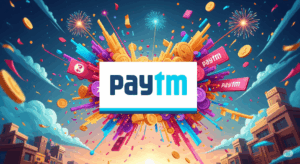Remember when online shopping meant endlessly scrolling through product pages and bouncing between a dozen different websites just to find what you needed? Well, get ready for a radical change! OpenAI’s ChatGPT has officially added shopping features, transforming the humble AI chatbot into something much more powerful: a direct e-commerce marketplace.
This isn’t just about getting answers; it’s about seamlessly discovering and potentially purchasing products like fashion and electronics without ever leaving the conversational interface. Think about that for a moment: your next pair of shoes or a new gadget could be recommended and bought through a simple chat.
This is a truly significant step towards AI platforms becoming new commerce hubs. By leveraging structured third-party data to power these recommendations, ChatGPT is blurring the lines between search, discovery, and direct purchase. It’s an evolution that’s set to redefine the online shopping experience for millions. If you’re involved in e-commerce, digital marketing, or just a curious consumer, this development is too big to ignore. Let’s dive into what this means for all of us.
The Dawn of Conversational Commerce: Why Chatbots Are the New Shopping Malls
For years, chatbots have been evolving, moving from basic customer service tools to sophisticated AI assistants. The missing piece, however, was often the direct link to transaction. OpenAI’s move changes that, ushering in a new era of “conversational commerce.”
So, why is this happening now?
- Natural Language Interaction: Modern AI chatbots excel at understanding natural language. Users are accustomed to asking questions and getting detailed responses. This natural flow perfectly mimics how we might ask a sales assistant in a physical store for recommendations.
- Instant Gratification & Convenience: In today’s fast-paced world, consumers crave speed and convenience. If an AI chatbot can not only recommend a product but also facilitate its purchase in the same conversation, it removes friction from the customer journey. It’s about finding what you want, when you want it, with minimal effort.
- Personalization at Scale: ChatGPT, and other AI models, can process vast amounts of user data (from current conversation context to past interactions) to offer hyper-personalized recommendations. This goes beyond simple “you might also like” suggestions, delving into truly understanding user intent and preferences.
- Competitive Landscape: The e-commerce industry is fiercely competitive. Every major player, from Google to Amazon, is looking for the next edge. OpenAI’s move into direct shopping within ChatGPT positions it as a direct competitor in the product discovery and e-commerce marketplace space.
How ChatGPT’s Shopping Features Work: A Glimpse Behind the AI Curtain
When you ask ChatGPT for product recommendations, it’s not just making educated guesses. It’s tapping into a vast ocean of information:
- Leveraging Structured Third-Party Data: At its core, ChatGPT’s shopping functionality relies on structured data feeds from various online retailers and e-commerce platforms. This data includes critical details like product descriptions, images, pricing, customer reviews, and availability. Think of it as a super-smart index of millions of products.
- Understanding Product Categories: Whether you’re searching for “the best wireless earbuds for running” or “a stylish, sustainable dress for a summer wedding,” ChatGPT uses its advanced natural language processing (NLP) to understand the specific product categories and attributes you’re interested in. It can even handle nuanced queries like “something that looks good on a pear shape.”
- Real-time Analysis and Recommendation Engines: The AI’s recommendation engines are constantly analyzing your query, refining results based on your follow-up questions, and applying various data points (like popularity, ratings, and even trending items) to curate a relevant list. This intelligent filtering helps surface the most appropriate products.
- Direct Purchase Links: Once you’ve found something you like, ChatGPT provides direct links to the retailer’s website, allowing you to complete the purchase process seamlessly. In some cases, it might even facilitate a direct purchase within the AI conversational interface itself, possibly through integrations with payment gateways or platforms like Shopify. This makes the transaction process incredibly smooth.
This capability significantly enhances the shopping experience, moving it from a passive Browse activity to an active, guided conversation.
The Ripple Effect: Who Benefits and Who Needs to Adapt?
ChatGPT’s entry into e-commerce is a massive shift, and it will have a profound impact across the digital economy:
For Consumers:
- Unparalleled Convenience: Imagine finding exactly what you need without navigating multiple websites. This streamlined approach saves time and effort.
- Personalized Discovery: The AI’s ability to understand intent and offer tailored suggestions means more relevant product discoveries and less sifting through irrelevant options.
- Enhanced Decision Making: Access to aggregated product reviews, specifications, and comparisons directly within the chat can help users make more informed purchasing decisions.
For E-commerce Businesses & Retailers:
- New Sales Channels: This opens up an entirely new avenue for product discovery and sales. Being visible within AI chatbots becomes as important as ranking on traditional search engines or marketplaces.
- Importance of Structured Data: Retailers need to ensure their product data is meticulously structured, accurate, and easily digestible by AI models. This means investing in high-quality product feeds, detailed descriptions, and up-to-date inventory data.
- Focus on Product Content Quality: With AI chatbots acting as intermediaries, the quality of your product images, descriptions, and the overall completeness of your product listings become even more critical. They are the “source material” for the AI’s recommendations.
- Shift in Marketing Spend: Brands might start allocating digital marketing budgets towards optimizing for AI platform visibility and direct integrations, alongside traditional search marketing and social media advertising.
- Partnerships & Integrations: Expect more collaborations between e-commerce platforms and AI companies to facilitate seamless product listing and transaction processes.
For Publishers & Content Creators:
- Data Contribution: If your content contains product reviews, guides, or comparisons, your structured data could be leveraged by AI chatbots to inform their recommendations.
- New Monetization Avenues: While ChatGPT aims to be ad-free in its recommendations, the underlying data contribution could open up new forms of monetization or partnerships. The focus will be on becoming an authoritative and well-structured source of product information.
Preparing for the Conversational Commerce Revolution
This is not a future possibility; it’s a present reality. To thrive in this evolving e-commerce arena, here’s how you can adapt:
- Audit Your Product Data: Ensure your product feeds are clean, comprehensive, and rich with descriptive attributes. This is the fuel for AI recommendations.
- Embrace Structured Data (Schema Markup): Implementing product schema, review schema, and other relevant schema.org vocabulary on your product pages and content will make it easier for AI models to understand and utilize your information.
- Focus on FAQs & Conversational Content: Anticipate user questions about your products and services. Create detailed FAQs that an AI chatbot could easily pull from. Think about how a human might ask for information.
- Monitor AI Shopping Features: Stay informed about how AI chatbots like ChatGPT are evolving their shopping capabilities. Experiment with them to understand the user experience and identify opportunities for your brand.
- Prioritize User Experience: Even with AI intermediaries, the end goal is a seamless customer journey. Ensure your own website and checkout process are optimized for conversions once a user clicks through.
- Build Brand Trust: In an environment driven by AI recommendations, brand reputation and authentic customer reviews become even more critical for influencing purchasing decisions.
ChatGPT’s entry into the e-commerce arena is a clear signal that the way we discover and buy products is undergoing a profound transformation. It highlights a future where AI chatbots aren’t just for chatting, but for shopping. By proactively preparing your digital strategy for this shift, you can ensure your brand remains at the forefront of this exciting conversational commerce revolution. It’s time to talk shop, literally, with AI!







